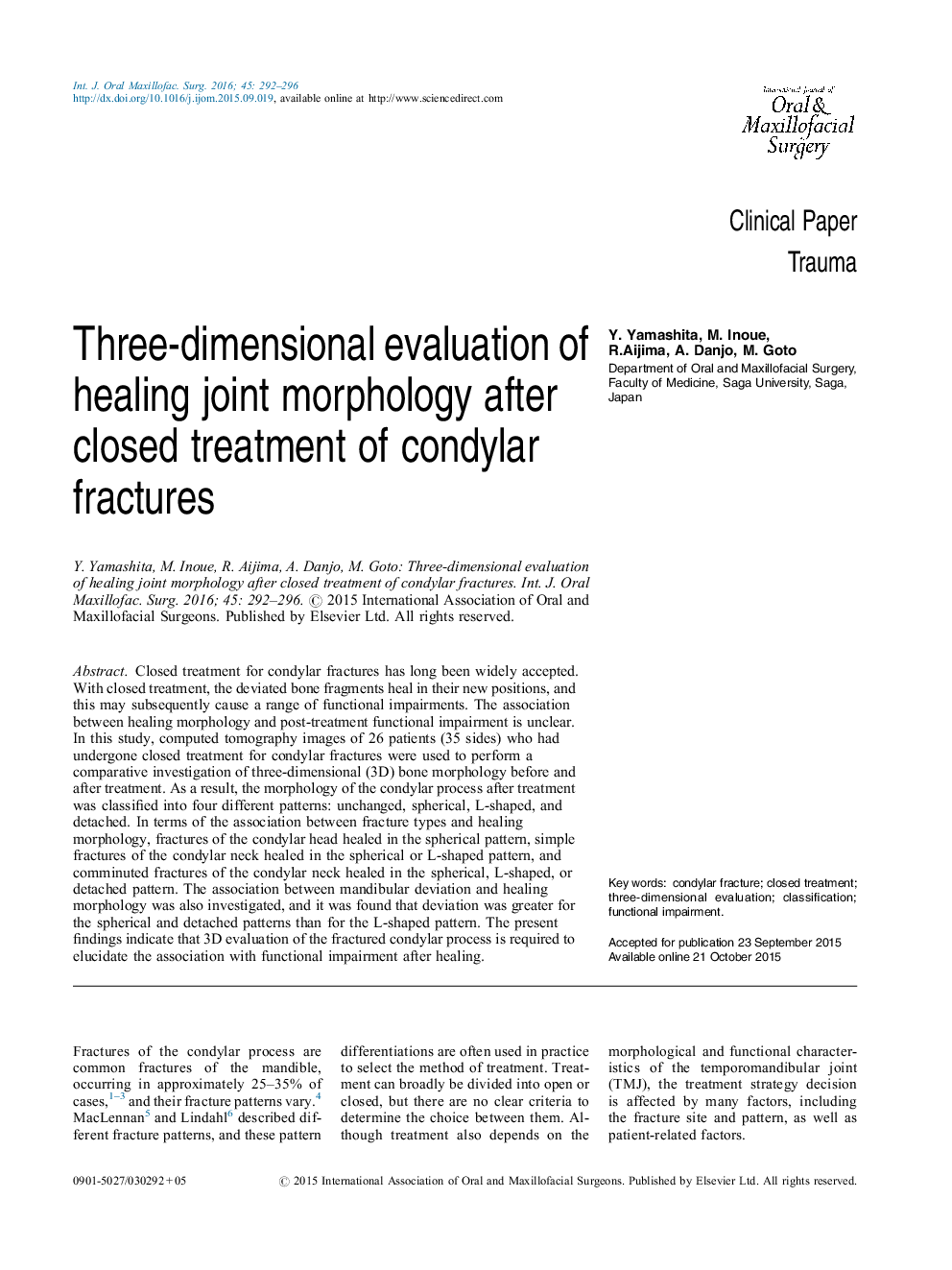| Article ID | Journal | Published Year | Pages | File Type |
|---|---|---|---|---|
| 3131856 | International Journal of Oral and Maxillofacial Surgery | 2016 | 5 Pages |
Closed treatment for condylar fractures has long been widely accepted. With closed treatment, the deviated bone fragments heal in their new positions, and this may subsequently cause a range of functional impairments. The association between healing morphology and post-treatment functional impairment is unclear. In this study, computed tomography images of 26 patients (35 sides) who had undergone closed treatment for condylar fractures were used to perform a comparative investigation of three-dimensional (3D) bone morphology before and after treatment. As a result, the morphology of the condylar process after treatment was classified into four different patterns: unchanged, spherical, L-shaped, and detached. In terms of the association between fracture types and healing morphology, fractures of the condylar head healed in the spherical pattern, simple fractures of the condylar neck healed in the spherical or L-shaped pattern, and comminuted fractures of the condylar neck healed in the spherical, L-shaped, or detached pattern. The association between mandibular deviation and healing morphology was also investigated, and it was found that deviation was greater for the spherical and detached patterns than for the L-shaped pattern. The present findings indicate that 3D evaluation of the fractured condylar process is required to elucidate the association with functional impairment after healing.
